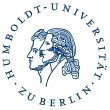Surface enhanced Raman scattering of complex samples
|
In surface-enhanced Raman scattering (SERS), we observe an increase in Raman cross section from molecules that reside in the local optical field of a plasmonic nanostructure (electromagnetic enhancement) and/or experience a so-called chemical enhancement through electronic interaction with the metal. Individual metal nanostructures act as tiny probes that can be brought to the analyte of interest or be arranged in space. We are interested in the new vibrational spectroscopic perspective on biological and chemical processes, and we do not consider SERS a ‘detection tool’. In the focus of our research are spectra of the samples themselves, including molecules that give only small Raman signals or occur at low concentration, rather than those of label molecules or SERS tags. Thereby we study the interaction of molecules with surfaces of nanostructures. Multi-photon excitation and surface enhanced hyper Raman scattering
We collect multi-photon excited spectra in the enhanced local optical fields of plasmonic nanostructures, and combine different two-photon spectroscopic methods for multimodal sensing and imaging. Thereby, we get morpho-functional information along with information about molecular composition, structure, and interactions, even in complex biosystems such as live cells. Plasmonic catalysis
Hot carriers generated from the decay of localized surface plasmon resonances can take a major role in catalyzed reactions on metal nanoparticles. At the same time, the local fields of the metal nanoparticles enhance the vibrational spectrum of a reacting species. We generate such catalytically active surfaces and demonstrate the in-situ monitoring of plasmon-catalyzed (and non-catalyzed) reactions using SERS. This gives new insight into mechanisms of electron harvesting and light-to-chemical energy conversion. The results also have implications for the characterization of new catalyst materials, and for optical sensing using plasmonic materials. Multimodal spectroscopic characterization of plant tissuesHaving applied Raman, SERS, and infrared spectroscopy, together with mass spectrometry to the analysis of pollen specimens for more than a decade, we find that the idea of characterizing the chemistry of plant tissues by spectroscopy opens exciting new avenues in materials science. Plant samples can be considered a benchmark when it comes to developing multimodal spectroscopic tools and to adapting pattern recognition and machine learning in spectroscopic data analysis and imaging. Apart from the methodology, the practical questions that we address include the characterization of pollen, the biochemistry of the plant cell wall, and bio-silicification. |


